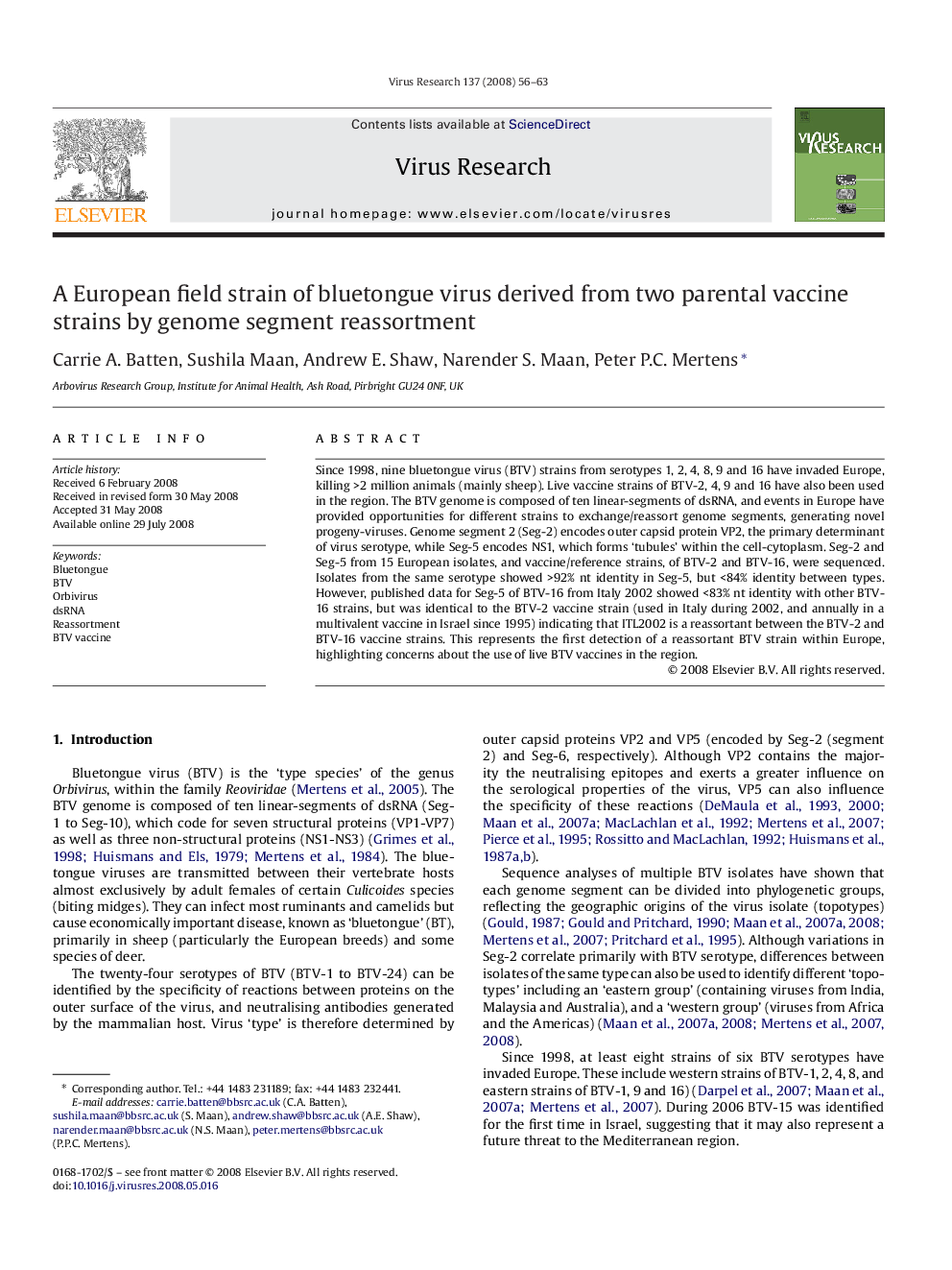| Article ID | Journal | Published Year | Pages | File Type |
|---|---|---|---|---|
| 3430327 | Virus Research | 2008 | 8 Pages |
Since 1998, nine bluetongue virus (BTV) strains from serotypes 1, 2, 4, 8, 9 and 16 have invaded Europe, killing >2 million animals (mainly sheep). Live vaccine strains of BTV-2, 4, 9 and 16 have also been used in the region. The BTV genome is composed of ten linear-segments of dsRNA, and events in Europe have provided opportunities for different strains to exchange/reassort genome segments, generating novel progeny-viruses. Genome segment 2 (Seg-2) encodes outer capsid protein VP2, the primary determinant of virus serotype, while Seg-5 encodes NS1, which forms ‘tubules’ within the cell-cytoplasm. Seg-2 and Seg-5 from 15 European isolates, and vaccine/reference strains, of BTV-2 and BTV-16, were sequenced. Isolates from the same serotype showed >92% nt identity in Seg-5, but <84% identity between types. However, published data for Seg-5 of BTV-16 from Italy 2002 showed <83% nt identity with other BTV-16 strains, but was identical to the BTV-2 vaccine strain (used in Italy during 2002, and annually in a multivalent vaccine in Israel since 1995) indicating that ITL2002 is a reassortant between the BTV-2 and BTV-16 vaccine strains. This represents the first detection of a reassortant BTV strain within Europe, highlighting concerns about the use of live BTV vaccines in the region.
